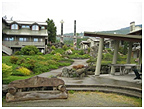Videos
New! Preserving the Past and Building for the Future Healthy Howardville
Land reuse sites can affect communities in many ways. Not only are there contamination issues that cause concern, but these communities tend to have economic, social, and health disparities. In addition to potentially harmful exposures to site contaminants, businesses, such as grocery stores, are often reluctant to site in these areas; people may be afraid to walk at night because they feel unsafe or buildings are unsafe; and there may be limited access to health care, which further increases disparities. The Howardville video provides the history and examples of ways this community is engaged in addressing a contaminated site with a goal to improve community health.
Engaging Health Departments
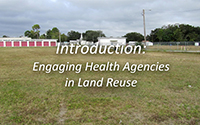
Engaging Health Departments in Brownfields/Land Reuse Redevelopment
These three videos highlight the ways that local health departments (LHDs) and other health agencies can enhance a community health focus to promote and help build capacity to become involved in brownfields/land reuse activities and redevelopment. While larger LHDs may have the capacity to be involved in land reuse work, smaller health agencies may be overburdened and short on resources. They may be unaware of funding that is available to them to work on these land reuse issues, and they may be unaware of ATSDR’s support and technical assistance for LHDs.
The examples of projects of state and local health departments representatives may inspire local health departments/health agency staff to become more engaged in brownfields/land reuse:
Introduction: Engaging Health Agencies in Land Reuse
State Health Agencies: Brownfields and Land Reuse Case Studies
Conclusion: Local and Tribal Health Agencies Engagement in Brownfields and Land Reuse
Be Healthy Blue Island
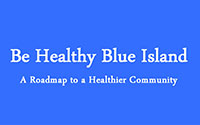
Be Healthy Blue Island
This video highlights how the strong sense of community pride and spirit brought people together to adopt a community health focus and drive the brownfields redevelopment and revitalization plans. The community of Blue Island used ATSDR’s National Brownfields/Land Revitalization Action Model, a 4-step framework, to assess community health related to redevelopment. The examples and community dedication depicted in this video may inspire other communities to replicate the positive projects in their own communities.
Tampa and Mulberry, Florida
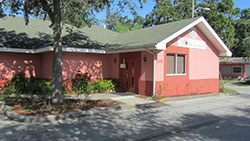
Dream is Possible: Brownfields to Healthfields
In the Dream is Possible: Brownfields to Healthfields video, communities show other communities how they are improving access to health and healthcare through redevelopment. We are hope that communities throughout the country will look at these examples and see Brownfields through a health lens. We hope that this video will provide a tremendous opportunity for your community to use the resources that we have talked about to have a positive impact on the health of your community.
Buffalo, NY
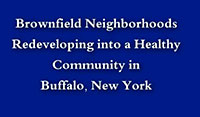
Brownfield Neighborhoods Redeveloping into Healthy Communities in Buffalo, NY
This success story teaches other communities how to promote health and address health disparities through redevelopment and highlights the success of the New York State Department of Health (NYSDOH) and Agency for Toxic Substances and Disease Registry (ATSDR) partnership with the University at Buffalo (UB), Buffalo Municipal Housing Authority (BMHA), and the Perry Choice Neighborhood community of Buffalo, New York.
Healing Tribal Lands through Brownfields Revitalization
The United States Environmental Protection Agency’s National Brownfields program and the U.S. Agency for Toxic Substances and Disease Registry have partnered to bring you this video highlighting two outstanding environmental successes among Native American Indian Tribes, Cherokee in Tahlequah, Oklahoma, and the Jamestown S’Klallam tribe in Sequim, Washington. These stories are outstanding examples of revitalization because these Tribes not only have a natural love for the land and its resources, a passion to ensure their people are healthy, and a determined attitude to be successful, but they also have used available Brownfields redevelopment programs to make it happen. The complete Healing Tribal Lands video with an introduction by Gena Timberman is available upon request by e-mailing atsdr.landreuse@cdc.gov.
Cherokee in Tahlequah, Oklahoma
This is the story of the Cherokee in Tahlequah, Oklahoma, taking historically significant property and redeveloping that property to ensure it's environmentally safe and meets the current needs of the community.
Jamestown S’Klallam tribe in Sequim, Washington
This is the story of the Jamestown S'Klallam tribe transforming an old log yard with 100 creosote pilings near their tribal center into a new opportunity for their shellfish, ceremonial, and subsistence harvesting.
Postville, Iowa
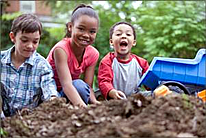
Upper Explorerland Regional Planning Commission (UERPC) Lead Outreach [WMV, 7:46]
A part of the ATSDR's Community Health Projects Related to Brownfield and Land Reuse 2009 grant.
The UERPC, in partnership with the Winneshiek County Public Health Department and the Agency for Toxic Substances and Disease Registry, developed a video about childhood lead poisoning as part of the "Lead Can Hurt" program. The purpose of the project is to inform students, faculty, and parents about lead poisoning which affects 1 in 14 Iowa children, a rate that is four times the national average. Through this video children and their parents can learn steps to take to reduce exposure to lead, and to lower the rates of childhood lead poisoning.
"To kick off this program blood lead screening was conducted at a local elementary school for children 6 and younger."
Baraboo, Wisconsin

Baraboo, Wisconsin [WMV, 16:12]
The city of Baraboo used state and federal funds to redevelop the Ringling Riverfront and help their growing city shine.
The complete Community Health Monitoring: Baraboo Ringling Riverfront Development report is available in Publications [PDF, 7.05 MB].
Jacksonville, Florida

The city of Jacksonville has embraced principles of Brownfields redevelopment, , creating affordable housing, cleaning up the environment, and increasing economic stability in the area. City of Jacksonville development community members address the benefits of the Brownfields/ Land Revitalization program in a series of interviews.
Kenneth Pinnix [WMV, 8:53]
Division Chief, Community Development Division Brownfields Program Manager, City of Jacksonville, Florida
Ken Pinnix introduces the Brownfields/Land Revitalization Program that he heads in Jacksonville, Florida. The Brownfields Program helps developers and entrepreneurs with the regulatory and assessment processes surrounding Brownfield redevelopment. It also offers financial assistance for such projects through partnerships with the U.S. Environmental Protection Agency, the Florida Department of Environmental Protection, and the Florida Office of Trade, Tourism and Economic Development.
Dr. Aaron Hilliard [WMV, 3:39]
Director of Environmental Health and Safety, Duval County Health Department
Dr. Aaron Hillard describes how redeveloping brownfields is a good public health practice. Brownfields can threaten the safety, social and economic stability, and natural environment within a community. Redevelopment can help to resolve these issues.
Dianne Kerr [WMV, 4:43]
President, North Riverside Community Development Corporation
Diane Kerr explains how the North Riverside Community Development Corporation is building affordable housing, a community center and recreation areas with federal, state and local grants and through partnerships with community entities.
Nandra Weeks P.E. [WMV, 7:30]
Principal Engineer, Geosyntec Consultants
Nandra Weeks explains the role of private engineering firms, like Geosyntec, in brownfields redevelopment. She discusses the Florida Brownfields Association as a place where individuals can go to find experts in other fields, such as consulting, finance, and law.
Mr. Walter E. Ware, Sr. [WMV, 6:23]
Former President, V M Ware Company/Johnstone Supply
Mr. Walter E. Ware, Sr. tells the story of his company’s successful purchase, remediation, and redevelopment of a nearby brownfield as part of the City of Jacksonville’s Brownfields Program.
James M. Waddell [WMV, 5:48]
U.S. Army Corp of Engineers
James M. Waddell outlines the Vision to Action process that has already helped four communities define their own visions for the new, revitalized community.
ATSDR Brownfields Webinar
Improving Community Health through Land Reuse and Development [54:10]
- View Presentation Slides [PDF – 2.88 MB]
Learn about:
- ATSDR’s free community health tools and training resources that can be customized to meet your community’s redevelopment needs.
- Accessing ATSDR’s technical experts that can help you locate and understand existing health and environmental data while also measuring changes in community health.
- Case examples of community projects, the steps they took to improve public health, and the impressive results they have achieved.
For a Copy of a DVD:
Contact Laurel Berman at (312) 886-7476, Leann Bing at (404) 747-4451 or Gary Perlman at (404) 918-1492, or e-mail us at atsdr.landreuse@cdc.gov.
- Page last reviewed: October 24, 2017
- Page last updated: October 24, 2017
- Content source:



 ShareCompartir
ShareCompartir

